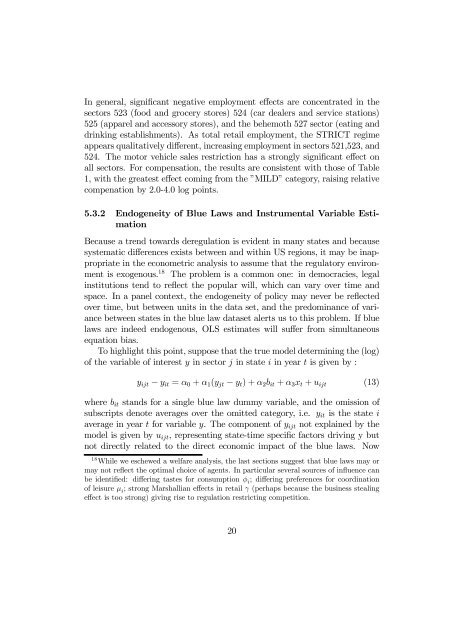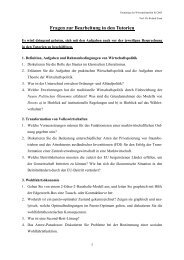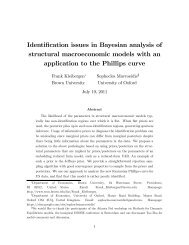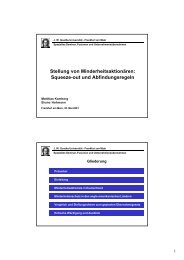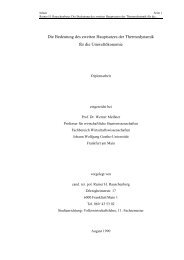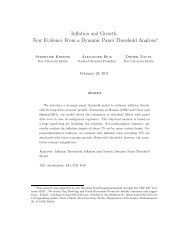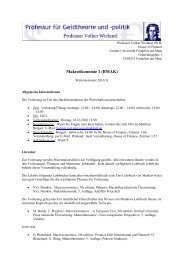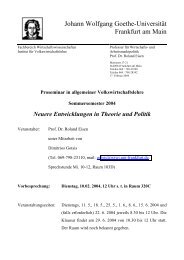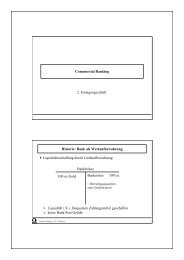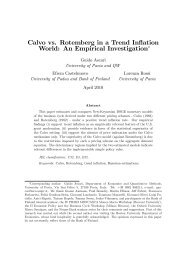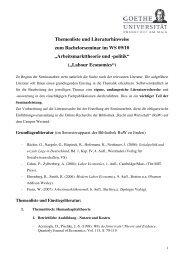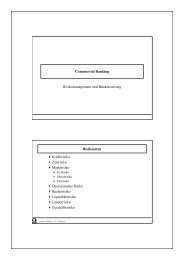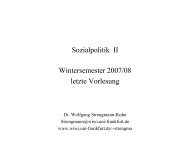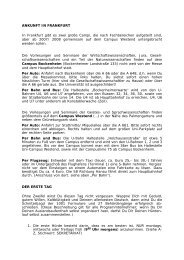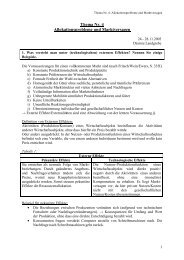Michael Burda - Sciences Po Spire
Michael Burda - Sciences Po Spire
Michael Burda - Sciences Po Spire
Create successful ePaper yourself
Turn your PDF publications into a flip-book with our unique Google optimized e-Paper software.
In general, significant negative employment effects are concentrated in the<br />
sectors 523 (food and grocery stores) 524 (car dealers and service stations)<br />
525 (apparel and accessory stores), and the behemoth 527 sector (eating and<br />
drinking establishments). As total retail employment, the STRICT regime<br />
appears qualitatively different, increasing employment in sectors 521,523, and<br />
524. The motor vehicle sales restriction has a strongly significant effect on<br />
all sectors. For compensation, the results are consistent with those of Table<br />
1, with the greatest effect coming from the ”MILD” category, raising relative<br />
compenation by 2.0-4.0 log points.<br />
5.3.2 Endogeneity of Blue Laws and Instrumental Variable Estimation<br />
Because a trend towards deregulation is evident in many states and because<br />
systematic differences exists between and within US regions, it may be inappropriate<br />
in the econometric analysis to assume that the regulatory environment<br />
is exogenous. 18 The problem is a common one: in democracies, legal<br />
institutions tend to reflect the popular will, which can vary over time and<br />
space. In a panel context, the endogeneity of policy may never be reflected<br />
over time, but between units in the data set, and the predominance of variance<br />
between states in the blue law dataset alerts us to this problem. If blue<br />
laws are indeed endogenous, OLS estimates will suffer from simultaneous<br />
equation bias.<br />
To highlight this point, suppose that the true model determining the (log)<br />
of the variable of interest y in sector j in state i in year t is given by :<br />
yijt − yit = α0 + α1(yjt − yt)+α2bit + α3xt + uijt<br />
(13)<br />
where bit stands for a single blue law dummy variable, and the omission of<br />
subscripts denote averages over the omitted category, i.e. yit is the state i<br />
average in year t for variable y. Thecomponentofyijt not explained by the<br />
model is given by uijt, representing state-time specific factors driving y but<br />
not directly related to the direct economic impact of the blue laws. Now<br />
18 While we eschewed a welfare analysis, the last sections suggest that blue laws may or<br />
may not reflect the optimal choice of agents. In particular several sources of influence can<br />
be identified: differing tastes for consumption φ i;differing preferences for coordination<br />
of leisure µ i; strong Marshallian effects in retail γ (perhaps because the business stealing<br />
effect is too strong) giving rise to regulation restricting competition.<br />
20


